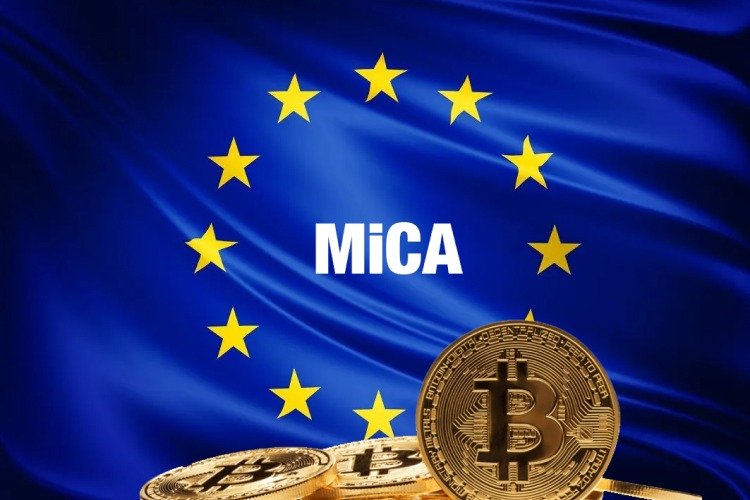Key Points:
-
The European Commission is exploring a shift in crypto supervision from national regulators to the European Securities and Markets Authority (ESMA).
-
The move aims to fix fragmented oversight under the MiCA framework and strengthen cross-border consistency.
-
Officials say centralizing oversight would enhance the EU’s global competitiveness and regulatory credibility.
Brussels Moves Toward Centralized Crypto Supervision
The European Union is preparing a major regulatory overhaul that could see the European Securities and Markets Authority (ESMA) take direct control of cryptocurrency oversight, ending years of fragmented supervision across member states.
ESMA Chair Verena Ross confirmed that the European Commission is developing plans to transfer oversight of several financial sectors — including crypto — from national regulators to the Paris-based agency. The initiative would realign supervision with the bloc’s Markets in Crypto-Assets (MiCA) framework, which came into effect in June 2024.
Ross said the goal is to foster “a more integrated and globally competitive” financial market in Europe. “Fragmentation persists across member states,” she told the Financial Times, noting that each national regulator currently interprets and enforces MiCA differently, leading to inefficiencies and inconsistent standards.
MiCA’s Patchwork Implementation Sparks Concerns
Under the current MiCA regime, crypto-asset service providers (CASPs) receive licenses from national authorities rather than a centralized EU body. While this decentralized approach was initially intended to accelerate rollout, it has resulted in divergent regulatory practices across the bloc.
Smaller nations such as Lithuania, Malta, and Luxembourg have been early movers. Lithuania issued its first MiCA license to Robinhood Europe, while Malta has authorized exchanges like OKX and Crypto.com. In Luxembourg, major players including Bitstamp and Coinbase have secured approval.
Yet, the quality and depth of supervision vary. In a July review, ESMA criticized aspects of Malta’s licensing process, warning that inconsistent enforcement could expose the single market to risk. Ross emphasized that delegating oversight to 27 separate national authorities forces each to build its own expertise — a costly duplication that hinders harmonization.
“Europe risks losing regulatory efficiency if we continue operating in silos,” she said.
The Passporting Dilemma: Unity vs. National Interest
One of MiCA’s cornerstone features — passporting — allows licensed crypto firms in one EU country to operate freely across the bloc. While this principle mirrors traditional financial services law, it has become a flashpoint for disagreement among member states.
In a recent Cointelegraph podcast, Jerome Castille, Head of Compliance at CoinShares, said the greatest challenge for MiCA lies in ensuring “consistent implementation and mutual recognition” of licenses. Without uniform supervision, he warned, passporting could lead to “regulatory arbitrage,” where companies flock to the most lenient jurisdictions.
Marina Markezic, Executive Director of the European Crypto Initiative, echoed that concern. “Having 27 different competent authorities supervising the same regulation risks undermining MiCA’s harmonization goals,” she said.
France, in particular, has pushed back against unrestricted passporting. Paris-based officials have reportedly discussed imposing additional vetting measures on crypto firms licensed elsewhere in the EU before allowing them to operate domestically. Critics argue this could violate the EU’s single-market principles and weaken confidence in the bloc’s unified financial identity.
Strategic Implications for Europe’s Crypto Future
Established in 2011 in the aftermath of the global financial crisis, ESMA was designed to unify financial regulation and restore trust in European markets. Expanding its authority to crypto would mark a natural evolution of that mission — one aimed at aligning Europe’s digital-asset oversight with its broader Capital Markets Union ambitions.
Analysts say a centralized framework could strengthen investor protection, reduce compliance costs for crypto firms, and help the EU compete with the U.S. Securities and Exchange Commission (SEC) and U.K. Financial Conduct Authority (FCA) in regulatory credibility.
Still, national regulators may resist ceding control. “Balancing sovereignty and efficiency is the EU’s eternal challenge,” said one Brussels-based policy analyst. “Crypto regulation is simply the latest arena where that tension plays out.”
As MiCA implementation deepens through 2025, the proposal to empower ESMA will test whether Europe can truly deliver on its promise of a single digital-asset market — or whether national interests will continue to shape its crypto future.













Leave a comment